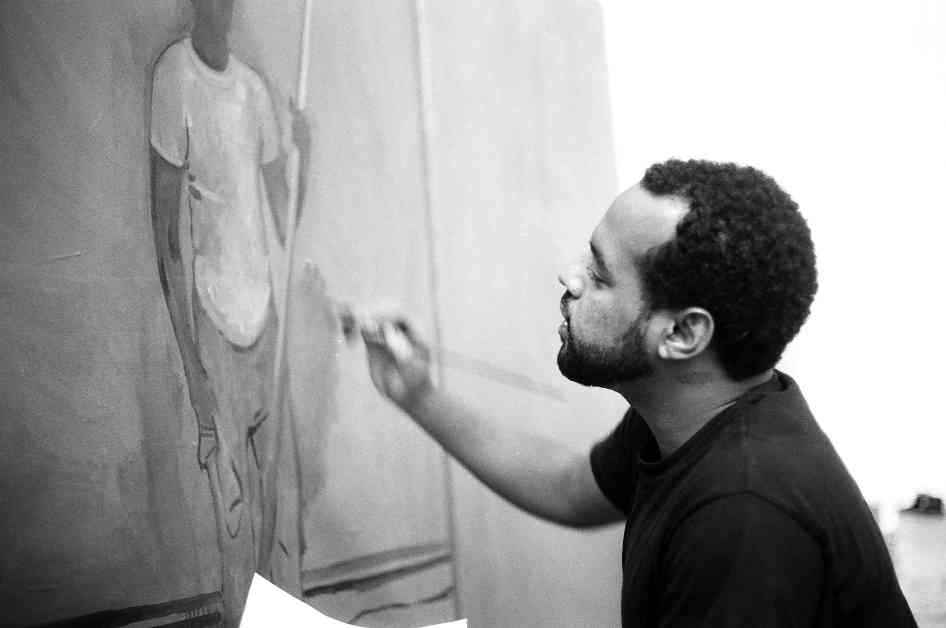Noah Davis: A Visionary Artist Transforming the Art World
In the masterpiece “Painting for My Dad” (2011), the talented artist Noah Davis captures a poignant moment in time, portraying a male figure gazing over a rocky landscape under a starlit sky. The figure, facing away from the viewer and illuminated by a lantern, exudes a sense of solemnity. This artwork, created in the year Davis lost his father to a brain tumor, carries a profound emotional weight that resonates with viewers.
Eleanor Nairne, the head of modern and contemporary art at the Philadelphia Museum of Art, notes the ambiguity in the painting, questioning whether the figure represents Davis himself or his late father. With Davis becoming a father two years before creating the artwork, there is a striking poignancy that adds layers of depth to the piece.
This month, the Barbican in London will host a comprehensive exhibition showcasing Davis’s groundbreaking work, marking the largest retrospective of his art to date. The exhibition, which began its journey at Das Minsk Kunsthaus in Potsdam, Germany, last fall, will later move to the Hammer Museum in Los Angeles in June.
The Artistic Legacy of Noah Davis
Born in Seattle in 1983, Davis ventured to New York to pursue his art education at the Cooper Union School of Art. While he did not complete his studies there, he found his artistic voice in Los Angeles after moving in 2004. Immersing himself in the local art scene, Davis drew inspiration from exhibitions, catalogs, and the creative individuals he encountered while working at the Museum of Contemporary Art (MOCA).
Tragically, just a few years after his father’s passing, Davis succumbed to cancer at the age of 32, leaving behind a profound artistic legacy rooted in his unwavering commitment to uplifting his community. His work, including the evocative “Painting for My Dad,” underscores his ability to infuse everyday moments with beauty and mystery, drawing viewers into a world of gentle yet emotionally charged imagery.
Connecting Art to Everyday Life
Davis’s art reflects a deep understanding of art history, with influences ranging from Édouard Manet and Paul Cézanne to Romare Bearden and Mark Rothko. His work often blurs the lines between reality and imagination, inviting viewers to explore the complexities of everyday life through a lens of artistic interpretation.
One of Davis’s notable series, “Missing Link” (2013), delves into Black youth culture in inner cities, seeking to bridge the gap between personal experience and artistic representation. By reimagining historical paintings with Black figures set against modernist landscapes, Davis challenges traditional narratives and confronts the concept of the “missing link” in art history—the Black body.
As curator Wells Fray-Smith observes, Davis’s ability to weave together elements of art history with contemporary life creates a captivating dialogue that resonates with viewers on a profound level. His work evokes a sense of intimacy, inviting viewers to immerse themselves in a half-remembered dream that blurs the boundaries between reality and imagination.
Despite his untimely passing, Davis’s impact on the art world continues to reverberate, inspiring artists and audiences alike to explore new horizons and challenge conventional norms. Through his innovative approach to painting and his unwavering dedication to his community, Davis has left an indelible mark on the world of contemporary art.












